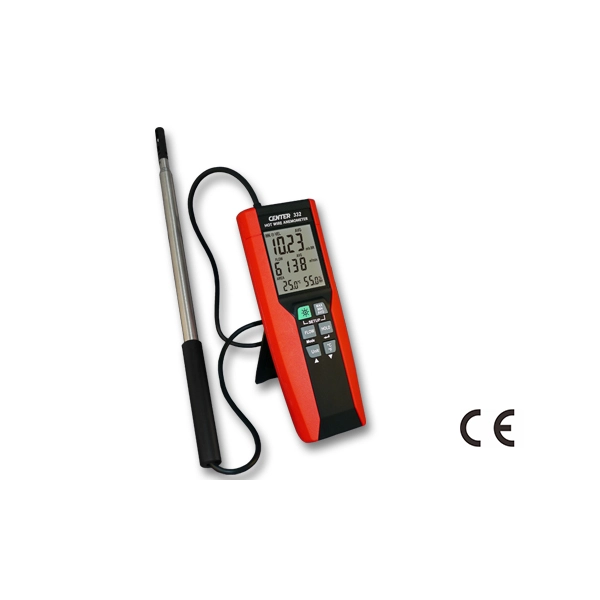How an Anemometer Can Improve Your Weather Monitoring System
How an Anemometer Can Improve Your Weather Monitoring System
Blog Article
Checking Out the Features and Advantages of Anemometers for Weather Condition Enthusiasts and Professionals
Anemometers stand as instrumental tools in the realm of weather tracking, accommodating both fanatics and skilled professionals alike. These devices offer a window into the dynamic world of wind patterns and rates, giving invaluable information for atmospheric evaluation and projecting. From mug anemometers to sonic anemometers, each type brings its unique collection of advantages and applications, shedding light on various elements of weather. As we look into the functions and advantages of anemometers, a deeper understanding arises not only of prevailing climate sensations but additionally of the more comprehensive implications for markets like wind power production and ecological research.
Value of Anemometers in Weather Monitoring
Anemometers play an essential role in weather condition monitoring by supplying accurate dimensions of wind rate, assisting in forecasting and understanding weather condition patterns. These instruments, varying from traditional cup anemometers to contemporary ultrasonic anemometers, are essential for meteorologists, scientists, and climate lovers alike.

Sorts Of Anemometers and Their Applications
The most common types of anemometers consist of cup anemometers, vane anemometers, hot-wire anemometers, and ultrasonic anemometers. Mug anemometers are composed of three or four mugs placed on straight arms that turn with the wind, measuring its rate. Vane anemometers, on the various other hand, utilize an openly turning vane to align with the wind instructions, giving both wind rate and instructions dimensions.
Cup anemometers are robust and ideal for basic weather tracking, while vane anemometers are preferred for directional dimensions. Ultrasonic anemometers are non-intrusive and use high precision, typically used in research and specialized weather monitoring applications.
Advantages of Utilizing Anemometers in Forecasting
In weather forecasting, the utilization of anemometers uses indispensable benefits for boosting the precision of climate projecting. Anemometers measure wind rate and direction, giving important information for forecasting climate patterns. By including wind information right into forecasting versions, meteorologists can much better understand the activity of climate systems, anticipate adjustments in atmospheric problems, and issue more exact forecasts.
Furthermore, anemometers play a crucial role in examining prospective weather condition dangers. Monitoring wind rates helps forecasters predict severe climate events such as storms, hurricanes, and winter season storms with greater accuracy. This very early caution system enables authorities to release prompt signals and implement required precaution, minimizing the dangers to life and building.
Additionally, anemometers assist in optimizing renewable energy manufacturing. By evaluating wind patterns, meteorologists can identify appropriate locations for wind ranches and anticipate power outcome, adding to the efficient generation of wind power.

Anemometers in Wind Power Manufacturing
Provided the vital duty anemometers play in supplying accurate wind data for climate forecasting and risk assessment, their value reaches the realm of wind power production. Anemometers are crucial tools resource in the area of wind power, where the measurement of wind rate and instructions is essential for determining the feasibility and performance of wind turbine installations. By accurately measuring wind speeds at differing elevations, anemometers aid optimize the positioning and layout of wind generators to maximize power result.
In wind ranches, anemometers are purposefully placed to accumulate real-time wind information that is utilized to assess the potential energy manufacturing of a website. This data is crucial in identifying the financial feasibility of wind power tasks and in forecasting power generation to make sure grid stability. Additionally, anemometers help in keeping an eye on wind problems to maximize generator efficiency, prevent damages from high winds, and guarantee the safety and security of workers functioning in the area of wind turbines.
Enhancing Climate Understanding With Anemometers

Anemometers play a vital function in enhancing our understanding of microclimates. These localized weather condition problems can differ dramatically from more comprehensive local forecasts, making it necessary to have precise information for particular locations. anemometer. By purposefully positioning anemometers in different locations, scientists can gather in-depth info on how wind behaves in various surfaces, metropolitan settings, or bodies of water
Moreover, anemometers add to improving weather condition forecasting versions by offering real-time information on wind behavior. This info is specifically important for forecasting serious climate events, enhancing farming practices, and sustaining internet markets like aeronautics and maritime navigation. In general, anemometers are important tools that allow us to delve much deeper into the intricacies of climate systems, eventually bring about even more better-informed decisions and precise predictions.
Final Thought
Finally, anemometers play a critical duty in weather condition monitoring and forecasting by gauging wind rate and direction. They are vital devices made use of by weather lovers and specialists to collect accurate information for predicting climate patterns and assessing potential effects. Anemometers likewise have applications in wind energy production, further highlighting their significance in both weather forecasting and renewable resource fields. In general, anemometers add to boosting our understanding of climate sensations and improving projecting capabilities. anemometer.
From cup anemometers to sonic anemometers, each type brings its special set of benefits and applications, dropping light on numerous aspects of climatic problems. These instruments, varying from standard mug anemometers to modern ultrasonic anemometers, are essential for meteorologists, researchers, and weather fanatics alike. The most common types his explanation of anemometers consist of cup anemometers, vane anemometers, hot-wire anemometers, and ultrasonic anemometers. Cup anemometers are suitable and robust for basic weather monitoring, while vane anemometers are preferred for directional measurements. Anemometers are vital instruments in the field of wind energy, where the dimension of wind rate and instructions is vital for figuring out the feasibility and efficiency of wind generator setups.
Report this page